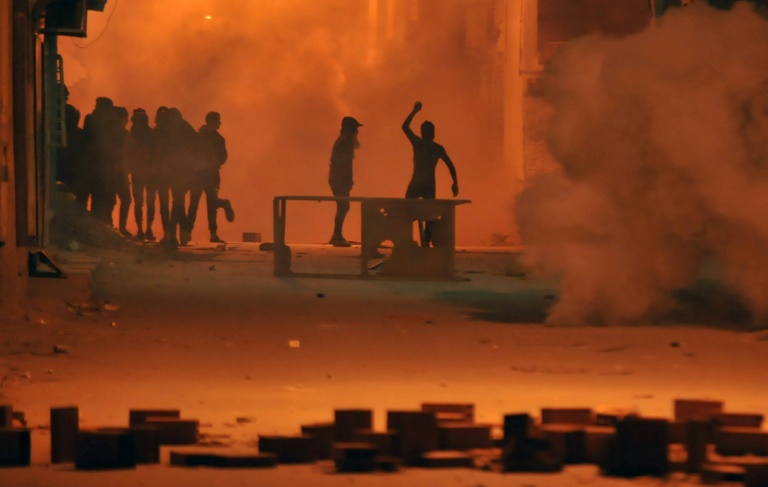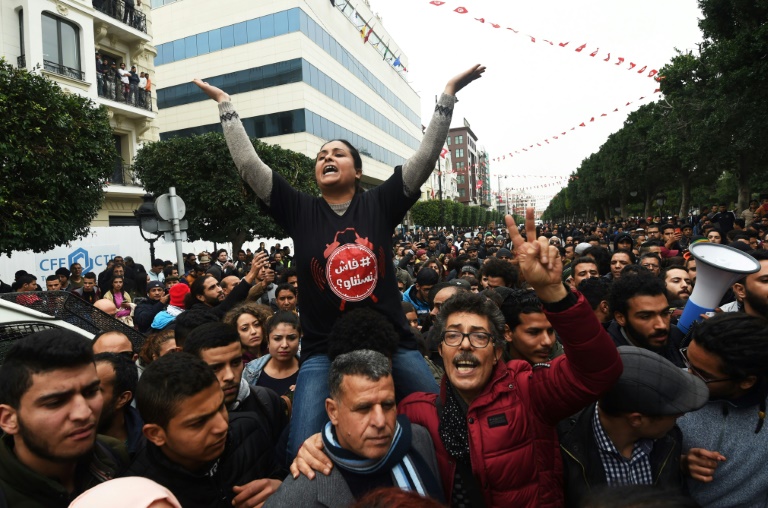Khune hits out at former Chiefs apprentice
The demonstrations come almost seven years after president Zine El Abidine Ben Ali was toppled in a revolt that sparked uprisings across the Arab world.
What is behind the latest unrest and where does the country go from here?
– What’s different this time? –
The trigger of the protests was a finance law imposing tax hikes after a year of rising prices, but the demonstrators’ demands are similar to those of 2011, says political analyst Selim Kharrat.
Above all, the protesters are calling for dignity and jobs, echoing slogans of the 2011 revolution — “Work, freedom, national dignity”.
“The same people are seeking these demands — the young and jobless — who are often unable to find other ways to express themselves” especially at the local level, said Kharrat.

Protestors throw stones towards security forces in Tunis’ Djebel Lahmer district early on January 10, 2018 after price hikes ignited demonstrations
Unlike the 2011 protests, “the explosion of violence was almost immediate” this year, said political scientist Hamza Meddeb.
The sudden boilover was a result of “very strong social anger” and “a political class increasingly cut off from the populace”, said Meddeb, associate fellow at Chatham House.
– Is the opposition behind the protests? –
The Fech Nestannew (What Are We Waiting For) campaign that initiated protests against the 2018 Finance Act is close to the leftist Popular Front party.
“But one would be giving this campaign a lot of credit to say that it is behind the current wave of protests,” said Meddeb.
The peaceful daytime rallies it organised failed to mobilise the masses, and many protesters rejected all parties, including the Popular Front, over broken protests in the past.
The biggest demonstrations have been at night.
“Many movements are spontaneous. They are born of the true anger of the disenchanted youths,” said Meddeb.
These include “apolitical elements who just want to fight, political elements that seek escalation and radicalisation, and criminal elements who take advantage of the troubles to loot and steal,” he said.

Tunisians shout slogans during a demonstration against the government and price hikes on January 9, 2018
But the involvement of impoverished youths in the protests has few political consequences, he said.
This was especially the case for parties and unions which want the current government to stay intact ahead of parliamentary and presidential elections in 2018 and 2019, respectively.
– What could happen next? –
Meddeb said the latest protests would have “no impact on the political system and stability of the country”.
The analyst expects the demonstrations to run out of steam after the anniversary of the 2011 uprising is marked on Sunday.
“If the situation gets bogged down, there could be a (cabinet) reshuffle as a sign of concession,” he said.
This has been the usual response to social challenges in the seven years since the uprising.
But Kharrat said a government reshuffle would only “delay the problem and lead to growing frustrations”.
“The longer we wait to respond to the demands of marginalised regions and populations, the more the mobilisations will become explosive,” he said.
Those behind disturbances are likely to face a tougher response, based on the success of the intervention of the security forces so far.
Conflict analysts International Crisis Group have also warned the country’s political class against succumbing to “authoritarian temptation”.
But Meddeb said that despite a more presidential system that goes against the 2014 constitution, such a temptation “can’t materialise” because of the balance of power.
“The country is at a very uncomfortable interval, between a democracy that has failed and a second impossible revolution”, he said, with each side seeking to hold on to its gains.
Download our app